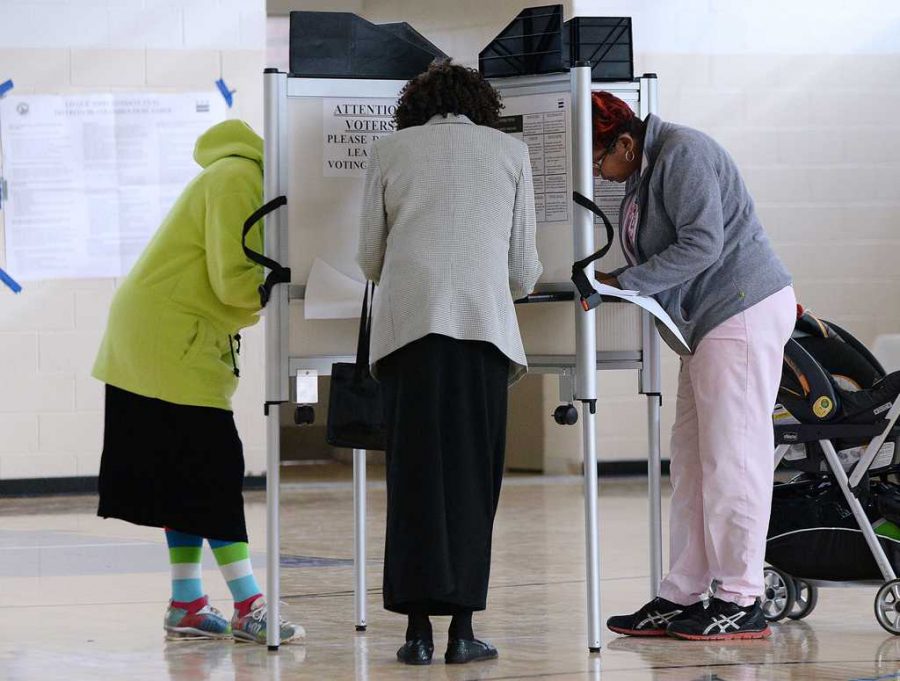Every time I call home, the conversation follows the same route.
Once my dad gets past the pleasantries, he dives into what he really wants to talk about, the presidential election. Within three minutes, I’m fielding questions about one candidate’s gaffe or the winner of the last debate.
The presidential race is inescapable in my day to day life. While talk of the upcoming 2016 election captivates the United States, part of the nation struggles to even participate in the elections.
Recently, Alabama evoked national backlash after shutting half of its DMVs — most of which served areas populated by poor, black residents — due to “budgetary constrictions.” These shutdowns came a year after the state implemented legislation — which Hillary Clinton has referred to as a “blast from the Jim Crow past,” — that requires residents to present a driver’s license, employee ID, U.S. passport or other forms of identification to vote.
While states claim new voting laws protect the democratic integrity of our elections, they actually do the opposite. These policies constitute conservatives’ attempts to prevent America’s growing nonwhite, more liberal population from voting and pushing government policy to the left.
In the upcoming election, voters will not wield the full protection of the Voting Rights Act since the Supreme Court softened the act’s authority to allow states’ free reign to impose stringent voting requirements. The law was a culminated effort of the civil rights movement to ensure black Americans could easily vote, and protect them from states’ racist attempts to exclude minorities from the voting polls.
For 50 years, it did just that. But in 2013, the Supreme Court decision Shelby v. Holder stripped the VRA of many of its essential components by removing the states’ obligation to obtain preclearance from the federal government before altering their voting laws.
Since then, states have continued to exercise racist sentiments in new ways by implementing restrictive voting legislation that limit access to voter registration, ID requirements, early voting and other measures.
Republicans assert that voter fraud is the basis for new voter legislation, but this claim has little legitimacy, as voter fraud is extremely rare.
According to the U.S. Department of Justice, in a massive state like Texas — populated by 25 million people — there have been only 100 federal prosecutions of voter fraud in the past 10 years.
For a while, this was the case in Pennsylvania. In March 2012, then-Gov. Tom Corbett signed the Voter ID Bill, legislation that required voters to present photo-identification at the polls. This law made it increasingly difficult for many to vote, especially students, minorities and the elderly, who were the least likely to have the necessary documents to vote.
These groups are, coincidentally, the most likely to vote Democrat, as 59 percent of voters under 29 vote Democrat, while only 36 percent vote Republican, according to a 2014 Gallup poll. Similarly, nearly two-thirds of black voters identify as Democrats, and the majority of Hispanics who do not consider themselves independents identify as Democrats as well, according to a 2013 Gallup study.
These laws also affect the likelihood of young minorities voting. 17.3 percent of black youth, 8.1 percent of Latino youth and 4.7 percent of white youth cited their lack of adequate ID as their reason for not voting, according to a 2013 study co-authored by Cathy J. Cohen of the University of Chicago and Jon C. Rogowski of Washington University in St. Louis.
Though Corbett claimed 99 percent of Pennsylvanians already had the ID needed to vote, according to data released by state election officials, 9.2 percent of Pennsylvanians did not have the required ID to vote in the 2012 election. This disproportionately affected urban areas likely to go blue in the 2012 elections, like Philadelphia, where 18 percent of its residents did not have the proper identification cards, based on comparisons of voter registrations and PennDot ID databases.
Luckily, voting restrictions are now simply a piece of Pennsylvania’s past, as Pennsylvania judge Bernard McGinley struck down the restrictions in January 2014, stating that while “voting laws are designed to ensure a safe and fair election … the voter ID law does not further this goal.”
Residents in other states aren’t quite as fortunate. According to the Brennan Center for Justice, since 2011, 49 states’ legislatures have introduced 468 laws with new voting restrictions. Twenty-one states have imposed new voting restrictions since 2010. Of these states, 15 have mandated legislation that will be effective for the first time during the 2016 presidential election.
In Alabama, the effects of voter ID requirements are already apparent. Though a state issued ID is one of the accepted forms of identification at voting booths, these are not easily accessible to many poor or black residents, as many lack the time or transportation necessary to acquire an ID. While Republicans claim that these IDs are easily accessible, Alabama only issued 5,294 IDs last year to the half a million Alabama residents without the required identification for voting, according to state officials.
To combat this growing trend, we need to halt the changes to the Voting Rights Act.
This halt may require additional legislation.This past June, Democrats in the state senate proposed new legislation, titled the Voting Rights Advancement Act of 2015, to restore the VRA’s original objective. The bill — which has only one Republican sponsor — will require states to clear future changes in voting laws, including ID requirements, with the federal government.
So far, this presidential race has gold-plated the vision of an America that works for all of its citizens. To hit this standard, people can’t simply talk about the election, they need to participate in it.
Alyssa primarily writes on social justice and political issues for The Pitt News.
Write to her at [email protected].


